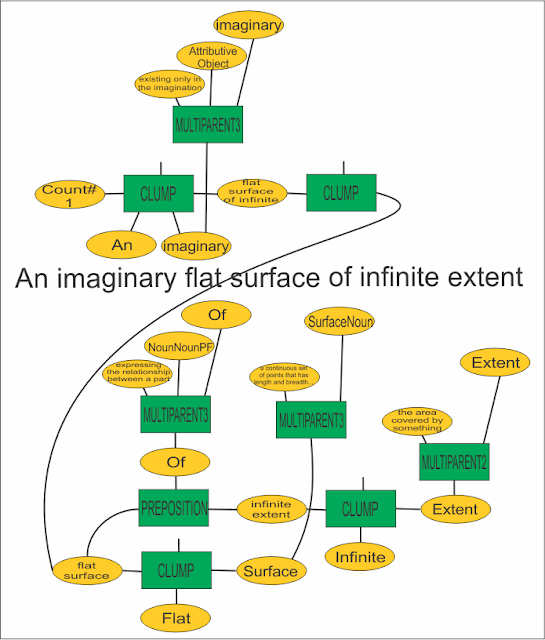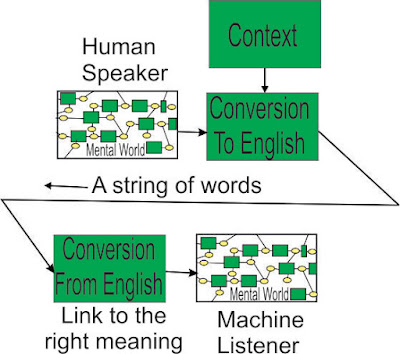Complex Objects Need Complex Text to Describe Them
What is complex text?
Complex text contains complex objects rendered in words – an
aircraft, a tank, a warship. The words become a clump as the physical
attributes and the behaviour is described, with new clumps becoming assemblages
of smaller clumps.
Wordgroups
Wordgroups are clumps of words recognised as a single
object:
Ambient
temperature
Repairs and Maintenance
Wordgroups can be made up of wordgroups (apologies that it
is a banking example):
Multiple-institution
person‑to‑person electronic funds transfer
instruction
The function of a wordgroup can be
described, using words and wordgroups
For the
purposes of this Act, if:
(a) a
person (the payer) instructs a person (the ordering
institution) to transfer money controlled by the payer to a third
person (the payee) on the basis that the transferred money
will be made available to the payee by:
(i) being
credited to an account held by the payee with a fourth person (the beneficiary
institution); or
(ii) being
paid to the payee by a fourth person (the beneficiary institution);
and
(b) either:
(i) the
transfer is to be carried out wholly or partly by means of one or more
electronic communications; or
(ii) the
transfer instruction is to be passed on wholly or partly by means of one or
more electronic communications; and
(c) the
ordering institution is:
(i) an
ADI; or
(ii) a
bank; or
(iii) a
building society; or
(iv) a
credit union; or
(v) a
person specified in the AML/CTF Rules; and
(d) the
beneficiary institution is:
(i) an
ADI; or
(ii) a
bank; or
(iii) a
building society; or
(iv) a
credit union; or
(v) a
person specified in the AML/CTF Rules;
then:
(e) the
instruction is a multiple‑institution person‑to‑person electronic
funds transfer instruction; and
(f) if
there are one or more persons interposed between the ordering institution and
the beneficiary institution—disregard those interposed persons in working out
the identities of the following:
(i) the
payer;
(ii) the
ordering institution;
(iii) the
payee;
(iv) the
beneficiary institution.
The definition of the wordgroup provides the “guts”, and will be used to control its activation.
The point is not so much what this
specific example does, but how an active procedure can be described in English,
and the words that make it up can be turned into pieces of machinery that do
exactly what the words say, with no programming involvement.
An Instance of Clumping
Sometimes adjectives are independent, and separately act on the
attributes of a common object. A large black car. The order is unimportant, but
conventional – “a black large car” sounds wrong.
Sometimes an adjective operates on an object to its right to
change its state, so it is necessary to create the object to be acted upon,
which includes the effects of adjectives, prepositional phrases, relative
pronoun clauses, participial phrases, and clumping, in the right order.
The phasing of adjectives and prepositional phrases becomes
important for complex objects.
All these things are done without thinking for you now, and you
don’t pay it much heed. In a large and complex text, small differences between
people’s unconscious understandings can (and do) lead to big stuffups. Showing
exactly what is intended (and letting people see what they think are mistakes)
can lead to a much more successful project.




Comments
Post a Comment